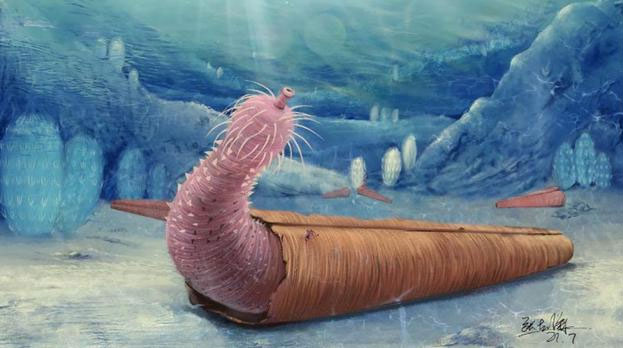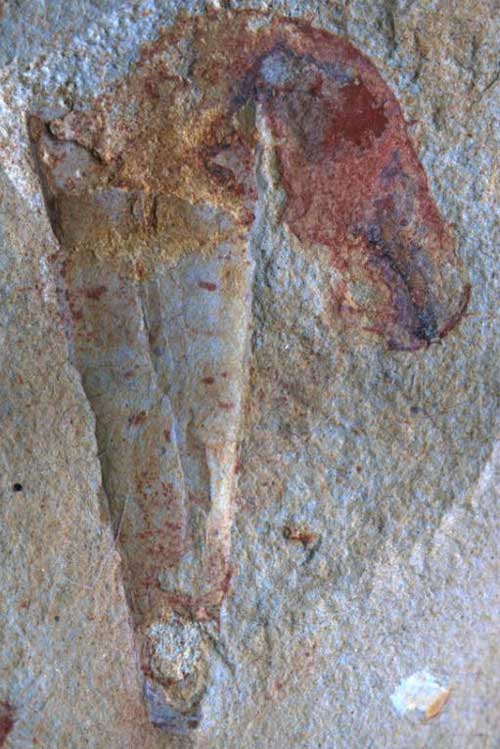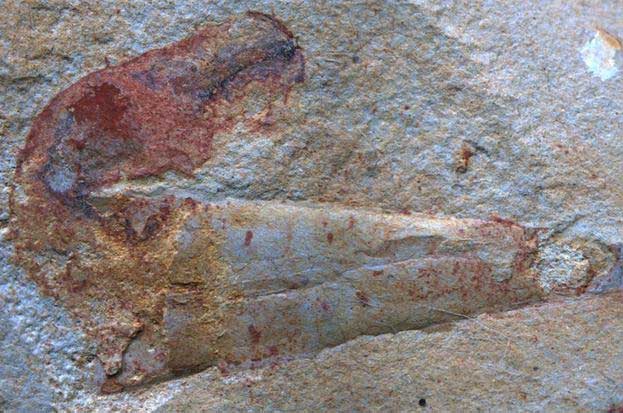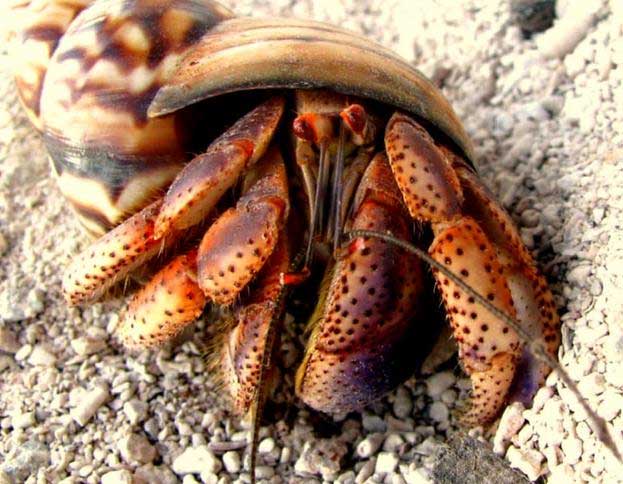You might be surprised to learn that there was a prehistoric species of penis worm that exhibited characteristics similar to today’s hermit crabs.
At the bottom of some ancient seas over 500 million years ago, these phallic creatures known as penis worms utilized empty shells for protection against predators, and evidence of this self-protective behavior still exists today in hermit crabs.

Penis worm 500 million years ago.
These penis worms lived similarly to hermit crabs and were first identified through the analysis of fossils found in Yunnan Province, southern China, dating back to the Cambrian period.
The fossils preserved the soft tissues of four penis worms known as Eximipriapulus and material from conical shells called hyoliths.


The worms always fit snugly in these shells, in the same position and direction.
Martin Smith, an associate professor of paleontology at Durham University in England, stated: “The worms always fit snugly in these shells, in the same position and direction.” He is a co-author of a study on the fossils published recently in the journal Current Biology.
Smith noted: “The only meaningful explanation is that these shells were their homes. It is truly surprising.” The behavior of claiming these shells as homes is believed to have developed much later, possibly during the Jurassic period around 170 million years ago.
This behavior is one of the hardest to infer from the fossil record. So how do researchers know for sure that the worms were not using the shells as temporary shelters or during egg-laying or as hiding spots?
Smith shared via email: “This is the big question we had to convince ourselves of in this study.”
He explained: “First, we noticed that the worms were actually inside the shells. This indicates that the biological characteristics were certainly part of the reason.”
He added: “In addition to this, there are two main observations. The first is that we did not find fossilized worms inside the shells, which we were puzzled about because we did not know if that was temporary or opportunistic.”
Smith further shared: “The second is the appropriate size. The worms were always found in a shell just large enough to accommodate them rather than oversized shells. They seemed to have chosen ‘just right’ shells for themselves.”
Surprises from the Cambrian period
Smith mentioned that at the time these worms existed, the world was a very different place. The continents were aligned along the equator, and no organisms lived on land except for “tiny organisms.” However, the oceans were beginning to teem with life.
He said: “It is astonishing that we are starting to see complex ecosystems that are often associated with much younger geological periods, right after the first complex marine animals appeared.”
Researchers also concluded that predators during this era must have been numerous and ferocious, forcing the worms, which were 1 to 2 cm long, to seek refuge in empty shells.
Although their findings are based on a small number of fossil samples, the emergence of this sheltering behavior reinforces the view that animal behavior and ancient ecosystems have many more modern characteristics than previously assumed.
The article notes that sheltering habits have developed in several other species beyond hermit crabs, including various other crustaceans and many types of marine worms.

Today’s hermit crabs also choose to live in discarded objects for shelter.
Today, penis worms are only found in areas where predators dominate the food chain. Some are very small and live in solitary conditions. Other species inhabit stinky, low-oxygen, and toxic waters. And they no longer take refuge in shells.


















































